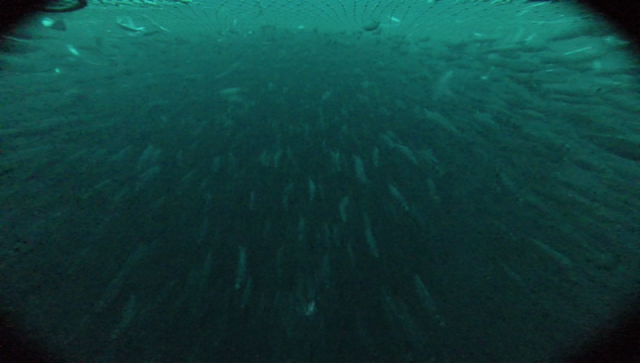We have arrived at the end of the last transect. Or actually: we had to stop a few miles earlier, because the echo sounder software crashed. Since we are so close and have managed to cover all the previous transect so well, Bram is still smiling (see picture). We are now on our way to Scheveningen, doing some administration -, backup - and cleanup activities.
Het schooltje makreel dat in de drop keel schacht zwemt, is er nog steeds (zie eerste editie van deze blog). De makreeltjes zitten niet echt gevangen, want er is op sommige plekken tussen schacht en kiel meer dan voldoende ruimte om te ontsnappen. Het schooltje is overigens wel wat kleiner geworden: eerst waren het er ongeveer 30. Nu zijn er nog zo'n 15 over. Misschien zijn er toch een paar ontsnapt? Of misschien zijn er een aantal dood gegaan. We weten het niet.
The little school in the shaft of the drop keel, is still there (see first post of this blog). The mackerel are not really prisoned, because at some place between shaft and keel there is more than enough space for them to escape. The size of the school seems to have decreased: at first we estimated 30 individuals; now there are about 15 left. May be some have escaped after all? Or have they died? We do not know.
 |
| The echo operation room with Sven and Bram on watch. |
We want to thank the visitors of this blog for their attention. It has been a successful survey in which we managed to collect essential data for the abundance estimate of herring and sprat in the North Sea. Also we have gained new insights in the behaviour of fish and introduced some promising new features in our survey. Hopefully we have been able to infect you with our enthusiasm in this blog. See you next year!
 |
| The echo operation room, empty. |
 |
| Sun set during HERAS 2016 |
 |
| Een van de obstakels op het laatste transect (53.20N): windmolenpark in aanleg - One of the obstacles on the laast transect (53.20N): wind park under construction |
















































